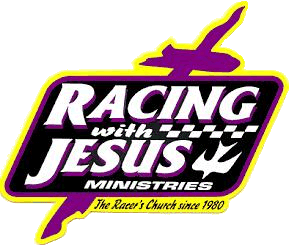Winning. For years NASCAR has been trying to find a way to put an emphasis and rewards on doing just that, and Thursday officials from the sanctioning body announced a new system that will do that in a massive way.
 NASCAR chairman and CEO Brian France announced a new championship deciding playoff format that will create a pseudo bracketed survivor system that culminates with a winner take all championship event to close out the NASCAR Sprint Cup season.
NASCAR chairman and CEO Brian France announced a new championship deciding playoff format that will create a pseudo bracketed survivor system that culminates with a winner take all championship event to close out the NASCAR Sprint Cup season.
The new system means radical changes to NASCAR’s 10-race Chase for the Championship that closes each season.
In its most basic sense, under the previous format, 12 drivers qualified for the Chase after the first 26 races of the season and then raced under essentially the same points system over the final 10 races that is used in the regular season.
That format is now a thing of the past.
The new system will see a format where 16 drivers qualify for the chase, with qualifying emphasis based on winning races. The new Chase will then used a round-by-round advancement system that in the end will see four drivers racing for the title in the final race of the year.
“We have arrived at a format that makes every race matter even more, diminishes points racing, puts a premium on winning races and concludes with a best-of-the-best, first-to-the-finish line showdown race – all of which is exactly what fans want,” Brian France, NASCAR chairman and CEO said in a release. “We have looked at a number of concepts for the last three years through fan research, models and simulations, and also maintained extensive dialogue with our drivers, teams and partners. The new Chase for the NASCAR Sprint Cup will be thrilling, easy to understand and help drive our sport’s competition to a whole new level.”
The details of the new system as spelled out by NASCAR:
- – A victory in the first 26 races all but guarantees a berth in the 10-race Chase for the NASCAR Sprint Cup – a change that will put an unprecedented importance on winning a NASCAR Sprint Cup Series race all season long
- – Expanding the Chase field from 12 to 16 drivers, with those drivers advancing to what now will be known as the NASCAR Chase Grid
- – The number of championship drivers in contention for the NASCAR Sprint Cup championship will decrease after every three Chase races, from 16 to start in the Chase Grid; 12 after Chase race No. 3; eight after Chase race No. 6; and four after Chase race No. 9
- – The first three races of the Chase (27-29) will be known as the Challenger Round; races 30-32 will be known as the Contender Round; races 33-35 will be the Eliminator Round and race No. 36 will be the NASCAR Sprint Cup Championship
- – A win by a championship-eligible driver in any Chase race automatically clinches the winning driver a spot in the next Chase round
- – Four drivers will enter the NASCAR Sprint Cup Championship with a chance at the title, with the highest finisher among those four capturing the prestigious NASCAR Sprint Cup Series championship.
Eligibility for the Chase for the NASCAR Sprint Cup
The top 15 drivers with the most wins over the first 26 races will earn a spot in the NASCAR Chase Grid – provided they have finished in the top 30 in points and attempted to qualify for every race (except in rare instances). The 16th Chase position will go to the points leader after race No. 26, if he/she does not have a victory. In the event that there are 16 or more different winners over 26 races, the only winless driver who can earn a Chase Grid spot would be the points leader after 26 races.If there are fewer than 16 different winners in the first 26 races, the remaining Chase Grid positions will go to those winless drivers highest in points. If there are 16 or more winners in the first 26 races, the ties will first be broken by number of wins, followed by NASCAR Sprint Cup Series driver points.
As was implemented in 2011, prior to the start of the Chase, all Chase Grid drivers will have their points adjusted to 2,000, with three additional bonus points added to their total for each win in the first 26 races.
Chase for the NASCAR Sprint Cup Structure
After the third Chase race, the Chase Grid will be left with 12 drivers. After the sixth Chase race, the field will drop to eight drivers, and following the ninth Chase race, only four drivers will remain in championship contention for the NASCAR Sprint Cup title.The first round (races 27-29) will be called the Challenger Round. If a driver in the Chase Grid wins a Challenger Round race, the driver automatically advances to the next round. The remaining available positions 1-12 that have not been filled based upon wins will be based on points. Each will then have their points reset to 3,000.
The second round (races 30-32) will be called the Contender Round. Likewise, if a driver in the top 12 in points wins a race in the Contender Round, the driver automatically advances to the next round. The remaining available positions 1-8 that have not been filled based upon wins will be based on points. Each will then have their points reset to 4,000.
The third round (races 33-35) will be called the Eliminator Round. If a driver in the top eight in points wins a race in the Eliminator Round, the driver automatically advances to the next round. The remaining available positions 1-4 that have not been filled based upon wins will be based on points. Each will then have their points reset to 5,000.
Additionally, drivers who are eliminated in the Contender and Eliminator Rounds will have their points readjusted. Each eliminated driver will return to the Chase-start base of 2,000 (plus any regular season wins bonus points), with their accumulated points starting with race No. 27 added. This will allow all drivers not in contention for the NASCAR Sprint Cup title to continue to race for the best possible season-long standing, with final positions fifth-through-16th still up for grabs.
Four Drivers, First-to-the-Finish Championship Finale
The 36th and final race of the season will be the NASCAR Sprint Cup Championship. Simply stated, the highest finisher in that race among the remaining four eligible drivers will win the NASCAR Sprint Cup Series title.Bonus points for laps led will not apply in the season finale, so the official finishing position alone will decide the champion.























Want to bet in two years they will change the point system once more. Why can’t we go back to how it used to be? 36 races. Whoever has the most points. Wins the championship. Some people my be excited for this. But I never liked the chase. And I’ll probably hate this to.
Meh. I have zero interest in the new format. It was a sport where consistency over different size tracks and styles of racing led to a championship. Now its just get lucky in 1 race and you go to the playoffs! No thanks.
Brian France says “this is what the fans want”, I don’t know what fans he is talking to but most fans that I know, myself included, want the old system that rewards consistency. As a fan and racer our sport has always been about consistency, not winning the last race of the year to become a champion. I know for myself I have watched fewer and fewer races since the chase was implemented and will probably watch even less now, which is ok as I will most likely attend more local racing where drivers actually win championships by being consistent.
Brian, thanks for ruining what was once a great sport to watch.